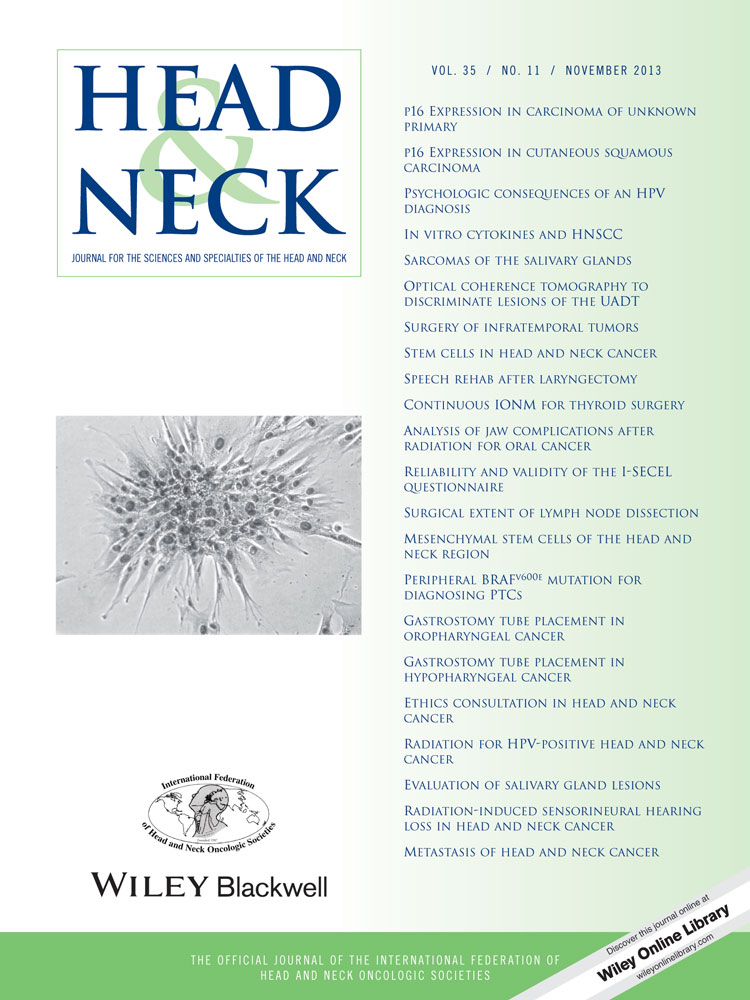Comparative functional cell biological analysis of mesenchymal stem cells of the head and neck region: Potential impact on wound healing, trauma, and infection
The results of this article were presented at the 82th annual meeting of the German ENT-Society in Freiburg, Germany, June 2011.
This project was supported in part by the Else–Kröner Fresenius Stiftung and the German Israeli Foundation.
Abstract
Background
Mesenchymal stem cells (MSCs) are multipotent mesenchymal progenitor cells, originally identified in bone-marrow. Little is known about MSCs of the head and neck region. We investigated cell biological properties with a potential impact on wound healing of 2 different tissue-resident MSC populations.
Methods
MSCs were isolated from human nasal mucosa (nmMSCs) and parotid gland (pgMSCs). Clonogenic potential, cell surface markers, cytokine secretion, chemokine receptor expression, mobility, and adhesion to extracellular matrix were examined in unstimulated and stimulated MSCs.
Results
NmMSCs had the higher clonogenic potential. PgMSCs showed a broader panel of chemokine receptor expression and displayed higher mobility, especially after challenge with bacterial lipopolysaccharide (LPS). NmMSCs were less mobile and showed increased LPS-induced secretion of the inflammatory cytokine interleukin-8 (IL-8) compared with pgMSCs.
Conclusion
These data highlight functional differences between tissue-resident MSCs of the head and neck region, which may impact functional properties of these cells in response to trauma or infection. © 2012 Wiley Periodicals, Inc. Head Neck, 35: 1621–1629, 2013




